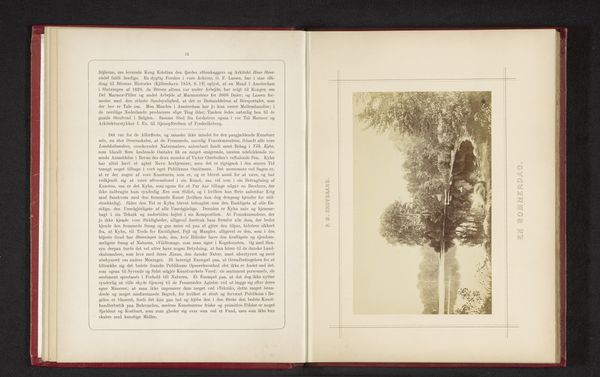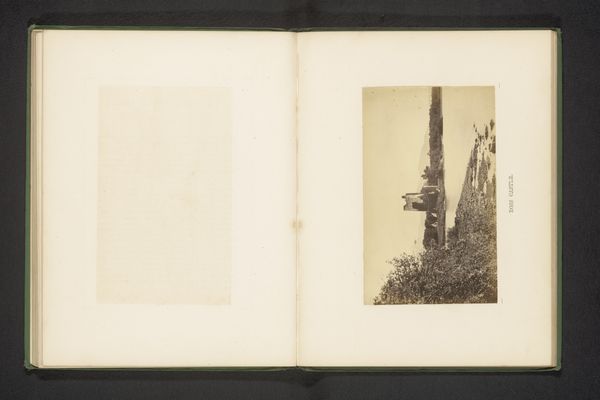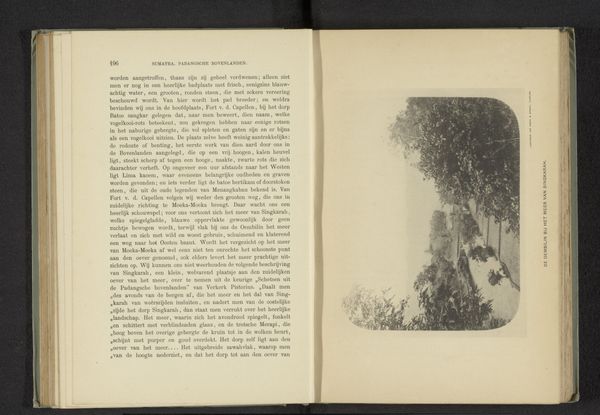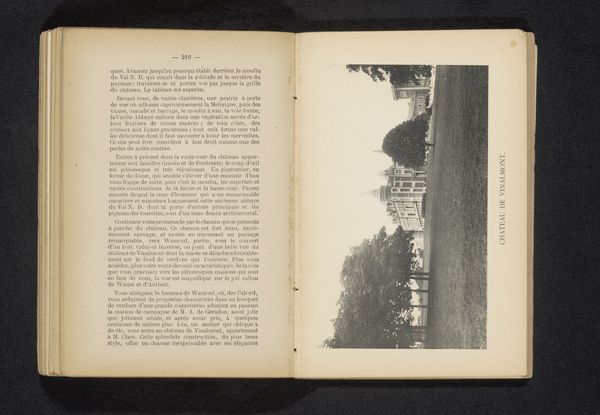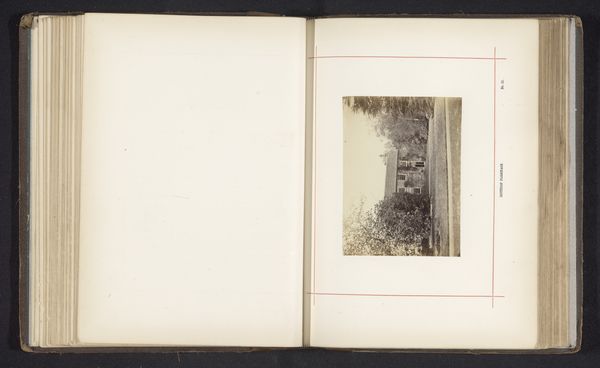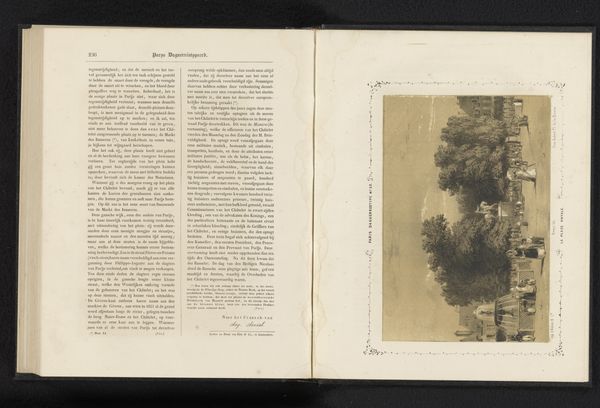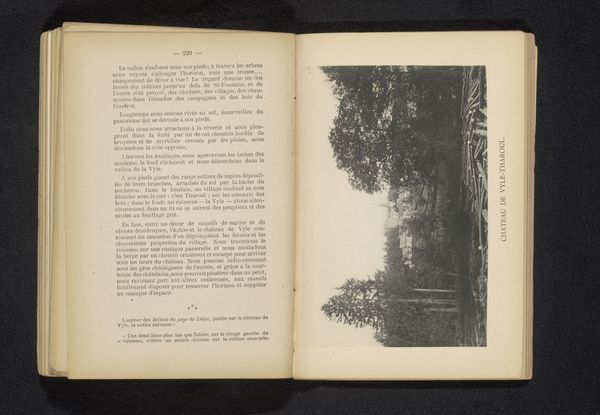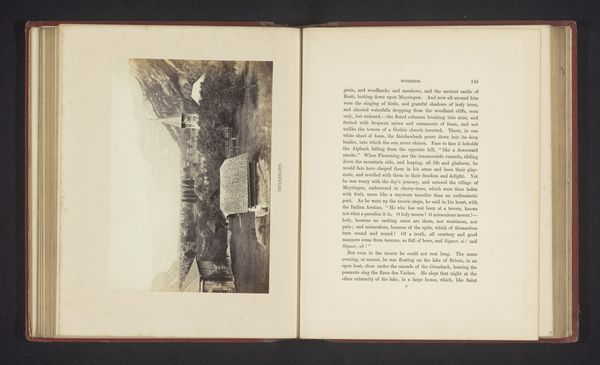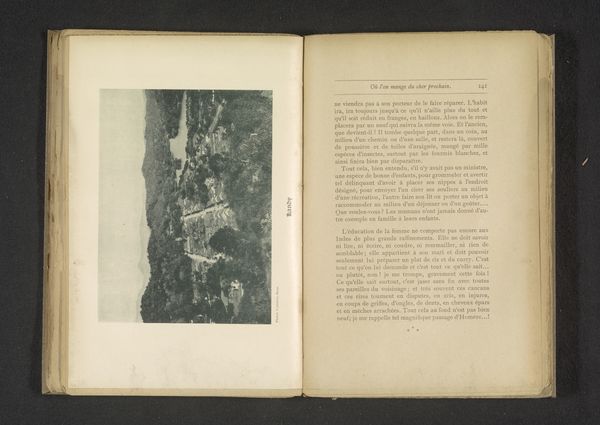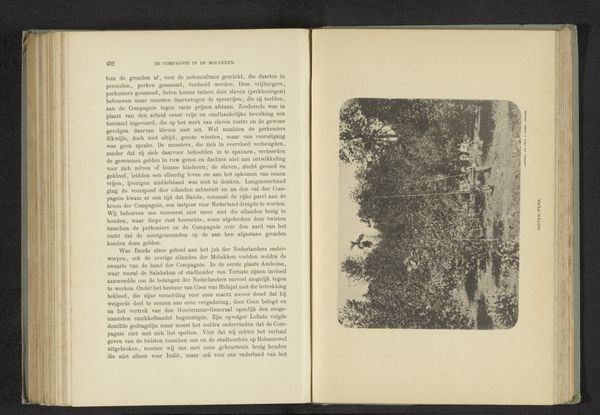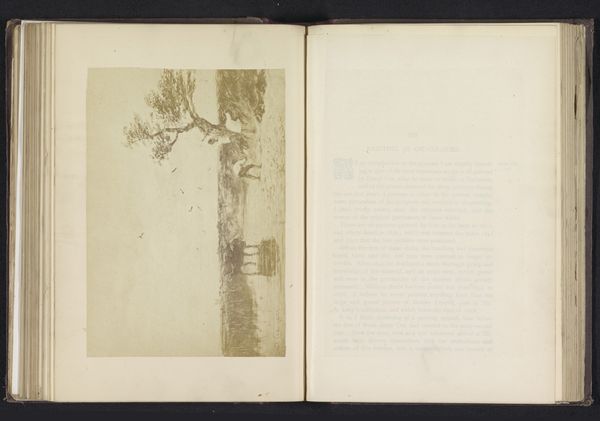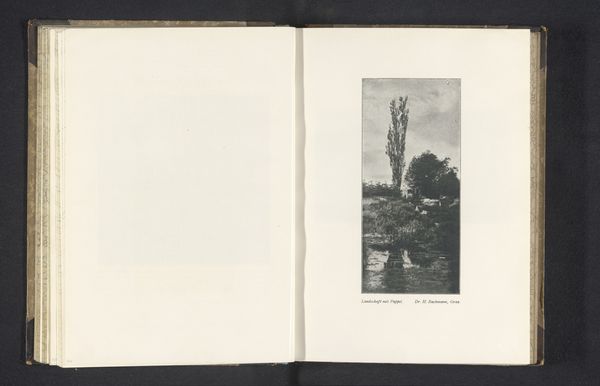
print, photography
# print
#
landscape
#
photography
#
history-painting
Dimensions: height 105 mm, width 157 mm
Copyright: Rijks Museum: Open Domain
Curator: Let’s consider this serene landscape capturing the Ch\u00e2teau de Famelette in Huccorgne, before 1890, by Victor Gaillard. The choice of photography as a medium presents its own commentary, even beyond the visual record it provides. What is your initial impression? Editor: It evokes a sense of quiet decay. The composition, slightly tilted and grey scale, along with the softness of the photograph suggests this. I'm drawn to the textures in the trees. How does it engage with broader historical narratives of power and class? Curator: Certainly. Examining it within its historical moment is critical. As photography gained prevalence, it democratized landscape painting. This print offers a stark reflection of nineteenth-century societal values and industrial encroachment. By presenting such grand architecture in such an accessible medium, a new perspective and viewer could emerge. I mean this ch\u00e2teau represents opulence but there is also a certain flattening happening to the traditional notions surrounding that type of wealth. Editor: I agree. Focusing on the photograph's materiality brings another layer into view. The ink, the paper, its very reproducibility points to a new means of engaging with art outside of the elite classes and artistic circles. It challenges our assumptions of art as inherently exclusive and singular. Curator: Exactly. I see the layering of photographic image atop a history-painted theme adds further discourse. A sense of romanticizing the past meets a newer method of recording reality, yet even still with biases introduced from the artist or publisher. What statement is being made? Editor: Thinking of it through materiality shifts that statement, however. I agree about history paintings normally representing grand idealized version of the world, but now, even with photography and the advent of easier printing practices, the creation of books like these and the means of sharing photographs also serves to codify narratives. Perhaps it presents more challenges to who the intended audience might be, since those able to acquire it may be of various standings in society. Curator: These images often reflect dominant power structures; this historical context encourages us to investigate whose voices and perspectives might be obscured. And the relationship between nature and artifice remains prominent to analyze in the image. Editor: I agree. Focusing on material gives context, revealing the labour, process, and access, inviting reflection on class dynamics related to the consumption and means of display itself. A complex photograph indeed.
Comments
No comments
Be the first to comment and join the conversation on the ultimate creative platform.
